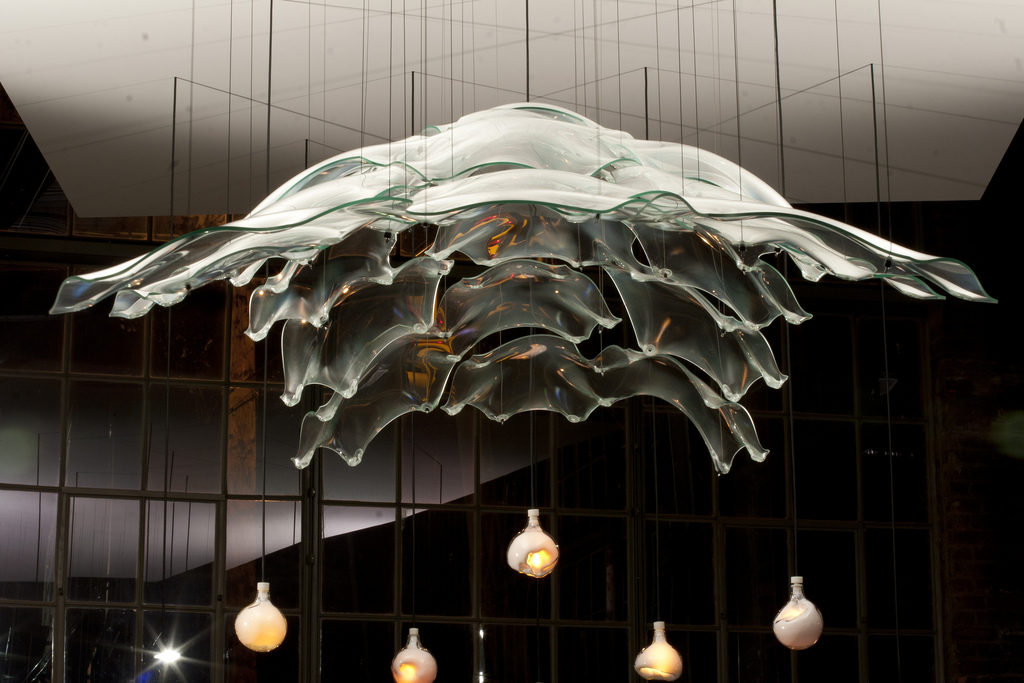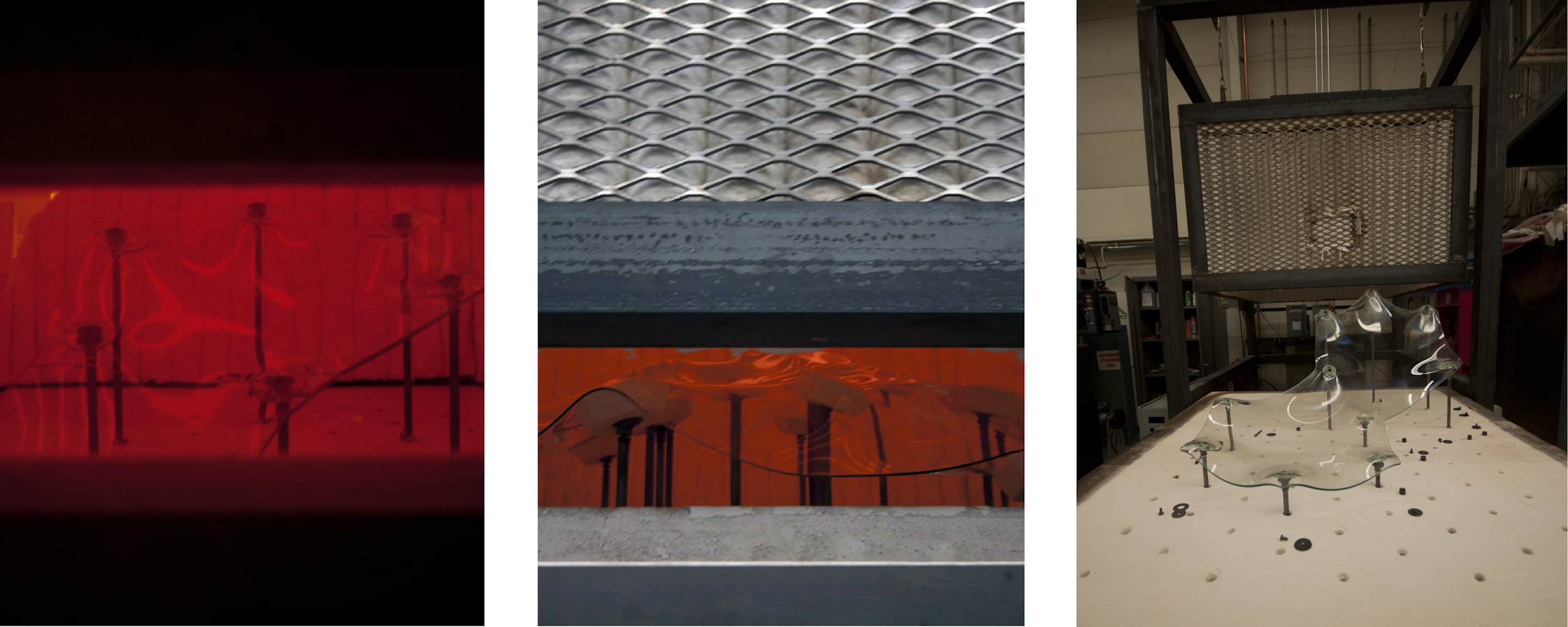 GlassCast is an ongoing research project into glass forming using reconfigurable molds
GlassCast is an ongoing research project into glass forming using reconfigurable molds
Glass is a ubiquitous part of the built environment today, but rarely is it seen in applications involving curvature. This is both a result of the complexities of working with such a sensitive material, and the high cost of tooling and the forming processes required to control its shape. Contemporary design is moving towards a more performance based computational model, connecting generative algorithms with secondary and tertiary inputs such as environmental and structural performance as well as fabrication and material constraints. This project seeks to tie these complex influences into one cohesive process, from design to fabrication.
Central to the development of the process was the design and fabrication of a servo controlled reconfigurable glass slumping kiln. Based on the classic "pin mold" typology, the kiln allows the rapid reshaping of the mold surface, to allow the production o0f continuously variable components from a single tool. Coupled with the development of custom jig systems for robotic abrasive waterjet cutting, the system can produce uniquely trimmed, double curved components in standard float glass. Parallel to this trajectory has been the development of custom grasshopper components to aprovide the designer with instant feedback on the limitation of curvature and scale which the kiln can produce. The components then produce the output to the kiln for the positioning setup, which is driven through a custom motion controller.
The initial work culminated in a installation which ran from January to April at Liberty Lofts Annex, in Ann Arbor, MI.
Project Credits:
Lead: Wes McGee of Matter Design Studio and Catie Newell of Alibi Studio
with Aaron Willette, Lucy Olechowski, Brandon Clifford
Fabrication Team:
Grant Weaver, Simon Rolka, Patrick Ethen, Maciej Kaczynski, Etienne Turpin, Andrew Stern, Brian Muscat, Chuck Newell
Consultant:
Steve Karnowski
This work has been funded by:
Research Through Making Grant | Taubman College of Architecture and Urban Planning
and
Office of the Vice President of Research | University of Michigan

